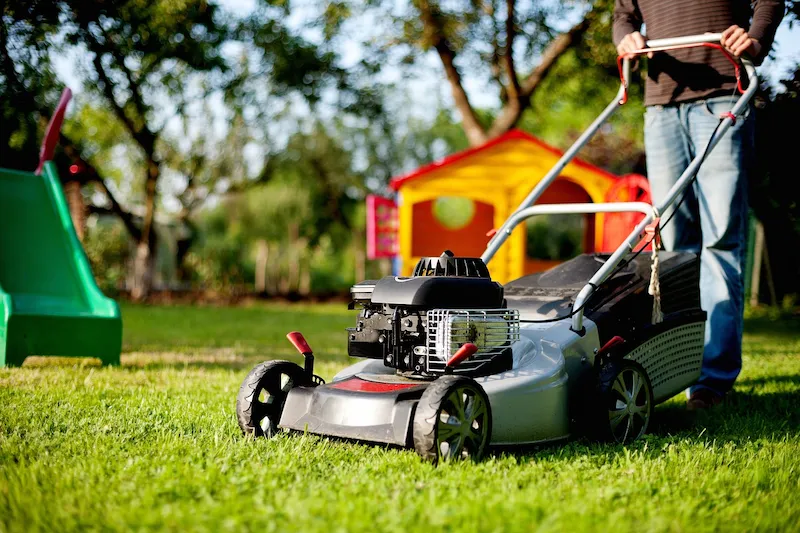Table of Contents
Maintaining a lush, green lawn can often feel like a full-time job. From mowing to watering and pest control, many homeowners find the task daunting. However, with strategic planning and the right tools, you can achieve a stunning lawn without dedicating every spare moment to maintenance. In this guide, we’ll explore various methods to create a beautiful yard that will be the envy of the neighborhood, all while investing minimal time and effort.
Understanding Your Lawn
Before diving into the practical aspects of lawn care, it’s essential to understand your specific grass type and the conditions of your property. Different grasses thrive in varying climates and soil types. For instance, cool-season grasses like Kentucky bluegrass flourish in northern regions, while warm-season varieties such as Bermuda are better suited for southern climates. Knowing your grass type helps you decide the best care practices for your lawn. Moreover, consider local factors such as sunlight, shade, and soil composition. Conduct a soil test to determine pH levels and nutrient content. This will guide you in making informed choices about fertilization and amendments needed to enhance your lawn’s health.
Essential Lawn Care Practices
Two fundamental practices to maintain a healthy lawn are mowing and watering. Regular mowing keeps your grass at optimal height, encourages lateral growth, and reduces pests and weeds. Aim to mow when the grass is dry to avoid clumping and ensure a clean cut. For optimal results, set your mower to a height that suits your grass type. Generally, taller grass offers better resistance to drought and weeds while rooting deeper into the soil. In terms of watering, grass typically requires about one inch of water per week, either from rain or irrigation. Water early in the morning to minimize evaporation losses and promote healthy root growth. If you’re looking for convenience and efficiency, consider incorporating cordless and Landroid lawn mowers into your routine. These tools can significantly reduce the time originally spent on mowing while delivering precise cuts and reduced noise.
Timing is Everything
Fertilization plays a crucial role in achieving a vibrant lawn. However, timing your application is vital. Spring and fall are typically the best times for fertilization, as the grass is actively growing. A slow-release fertilizer is beneficial, providing a steady supply of nutrients throughout the growing season. Avoid over-fertilizing, as it can lead to excessive growth and increased pest attraction. It’s also essential to follow the recommended rates on the fertilizer packaging, as nitrogen levels can vary. Integrating natural fertilizers, like compost or other organic options, can also promote long-term soil health.
Weed Management Strategies
Weeds can quickly turn your pristine lawn into an eyesore if not adequately managed. Implementing a proactive weed control strategy is vital for a healthy lawn. Early detection is key, so regularly inspect your lawn for any emerging weeds. Manual removal can be effective for smaller infestations, especially when those weeds are still young and easy to pull out. Pre-emergent herbicides can also provide preventive control against annual weeds. Applying these herbicides in early spring helps establish a weed-free environment. Keep in mind that post-emergent herbicides are effective for existing weeds but should be used judiciously to avoid harming your grass.
Watering Wisely
Watering your lawn correctly can make or break its appearance. Deep and infrequent watering encourages root development and increases drought resistance. Lawns benefit from about two to three deep watering sessions each week, rather than daily light sprinklings. When watering, ensure that the moisture penetrates six to eight inches deep into the soil. Consider the climate and rainfall patterns of your location. During drier months, adjusting your watering schedule may be necessary to maintain a healthy lawn. A rain gauge can help you measure rainfall effectively and adjust your watering practices accordingly.
Choosing the Right Tools
Investing in quality lawn care tools is imperative for achieving a picture-perfect lawn with minimal effort. A good lawn mower, edger, and aerator are essential components of your toolkit. For homeowners looking to ease their mowing responsibilities, embracing lawn mowers can make a significant difference, enabling effortless maintenance with technological innovation. While traditional lawn care tools remain useful, modern options often provide enhanced capabilities that can help streamline your routine. Robotic mowers, for instance, can navigate your yard autonomously, saving you time and ensuring a consistently manicured lawn.
Pest and Disease Prevention

Maintaining a healthy lawn means keeping pests and diseases at bay. Monitor your lawn for signs of distress, such as discoloration or patches of dead grass. Many common lawn pests, like grubs and chinch bugs, can wreak havoc if not controlled promptly. Understanding the signs of these pests can aid early detection. For instance, yellowing grass can indicate grub damage, while insect activity may cause visible thinning of the lawn. A proactive approach involving the use of insecticidal soaps, beneficial nematodes, or other organic solutions can help keep your lawn flourishing.
Bespoke Lawn Care Plans
Just as every lawn is unique, so should your care plan. Tailoring your maintenance schedule to consider your specific grass type, local climate, and lawn use is essential. Families with children and pets may need to take additional precautions to ensure the safety and health of both the lawn and its users. Consider enlisting a professional lawn care service if your schedule is too hectic. Experts can create a bespoke lawn care plan, incorporating pesticide management and seasonal treatments ensuring the best results for your green space.
Seasonal Care Tips
Different seasons call for different lawn care practices. Aligning your efforts with the seasonal needs of your grass can significantly impact its health. Here’s a seasonal breakdown of lawn care tips:
Spring: Focus on fertilization, aeration, and overseeding if necessary.
Summer: Maintain hydration and mow at a higher blade setting to promote shade and drought resistance.
Fall: A final fertilization boosts nutrient levels before winter, while aeration helps soil health.
Winter: Keep pathways clear of snow and debris, which can damage grass if pressed down for long periods.
By anticipating seasonal needs, you can ensure your lawn continues to thrive year-round.
Utilizing Technology for Lawn Care
Embracing technology can revolutionize your lawn care routine. Smart irrigation systems adjust water flow based on local weather conditions, conserving water while maintaining a lush lawn. Soil moisture sensors can alert you when your lawn requires watering, preventing over or under-watering. In addition, mobile applications can help track your lawn maintenance schedule, pest control measures, and fertilization plans, ensuring you don’t overlook essential tasks. Merging modern technology with traditional practices allows for an innovative approach to lawn management.
It’s increasingly apparent that our drive for a picture-perfect lawn can be achieved with less effort than one might think. By understanding your lawn’s needs and integrating modern tools into your routine, you’ll find that maintaining an attractive landscape is less about hard work and more about smart choices.
Want to explore something different? 6 Things to Consider When Selecting Patio Builders for Your Home

